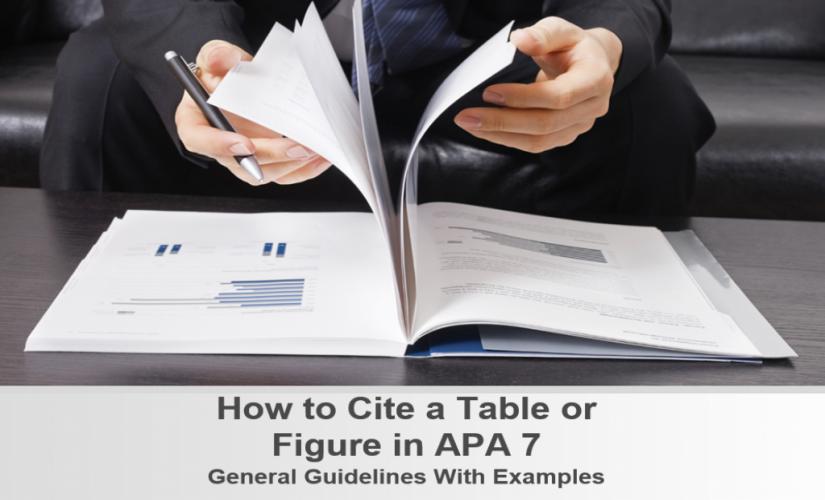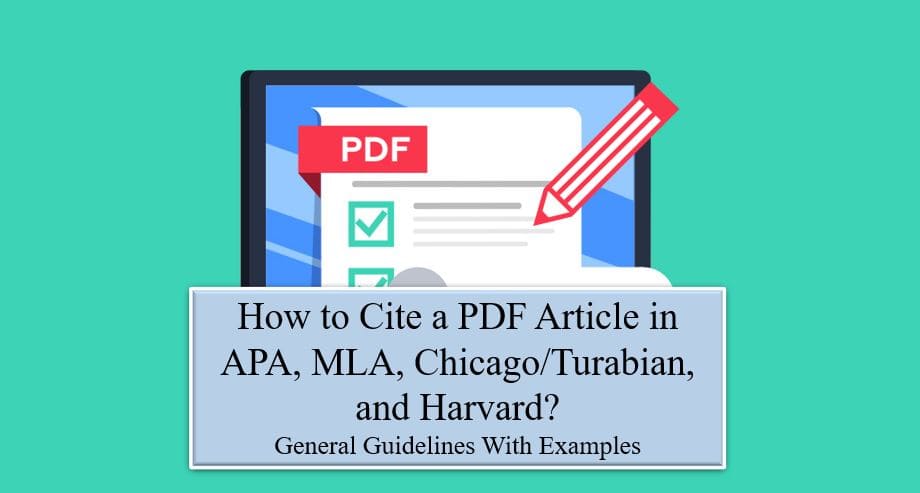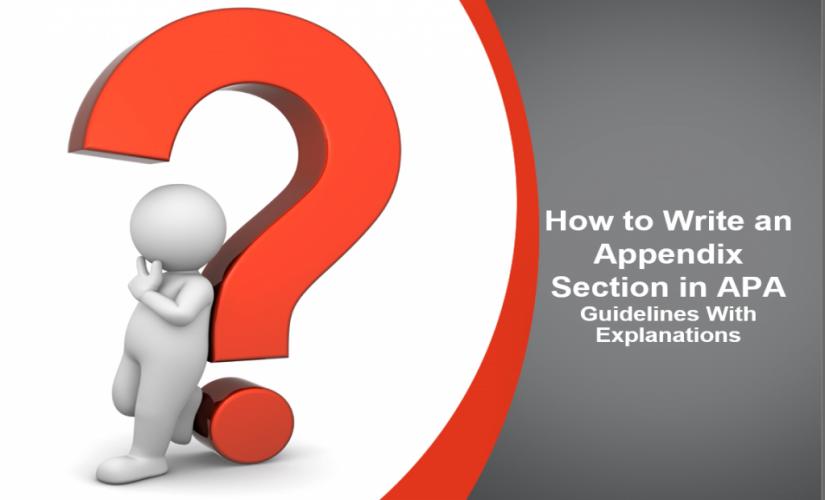Scholarly papers in APA 7 should contain adequate evidence to support all the claims made. Basically, tables and figures play a significant role in improving the credibility of arguments and enhancing the reader’s ability to understand the information presented. In this case, one should know how to cite a table in APA 7 to communicate large amounts of data efficiently. Also, these tools allow scholars to organize information effectively and support their central arguments. Then, the guidelines presented revealed that tables are graphical representations of data, which use rows and columns to organize specific data and information. Besides, these features differ from those of figures, containing pictures, images, and other forms of illustrations. In turn, one can obtain unorganized data and use tables to enhance its representation, which leads to confident presentations. As a result, quality illustrations should contain necessary headings and adequate notes to enhance their clarity.
General Guidelines of Citing a Table in APA 7th Edition
Tables and figures play a significant role in enhancing the reader’s ability to understand the information presented. Basically, writers use charts and graphs to communicate large amounts of data efficiently. Also, these tools allow scholars to organize information effectively. For example, tables are graphical representations of data, which use row and columns to organize specific data and information. In turn, these features differ from those of the figures, which may contain pictures, images, and other forms of illustrations. Besides, one can obtain unorganized data and use tables to enhance its representation. As a result, the approach on how to cite a table in APA 7 improves the readability of academic texts.

Using an APA Table Format
One should use tables, figures, and pictures when presenting large amounts of details efficiently and quickly. Basically, students must cite a table in APA 7 to support discussed features and enhance their communication. In this case, one should ensure that details on illustrations do not confuse the intended audience. Besides, tables and figures should not disguise essential information. In turn, one should always consider the importance of including all types of illustrations. Sometimes, writers may opt to represent the data in the text instead of using tables or figures. Therefore, one must use pictures if they support the meaning of the essay.
Citing Tables in APA
Writers can cite a table or figure in APA 7 for citations. Basically, the APA citation for self-made tables and figures should not include the author’s names or other details. However, one must include a short description of the picture in both cases. Hence, the following are the guidelines that one must follow when citing a table in APA 7.
- The scheme of a citation of a self-made illustration should appear as Figure X. Description of the picture’s image or title.
- The example of an actual citation for the figure should be Figure 2—a woman engaging in an anaerobic exercise.
Formatting Illustrations and Figures Correctly in APA 7th Edition
1. Relationship Between Tables and Figures
Tables and figures supplement details contained in the text. Basically, students should refer to all data tables in the essay by considering the citing rules for APA 7. In this case, one should provide detailed explanations of what readers should look for in the illustrations provided. Then, prudent writers focus on essential points and details that readers should draw from presented visuals. Besides, scholars should leave details about visuals when preparing their essays or research papers. In turn, readers should examine such information about their own. Therefore, one must reveal the connection between the illustrations and the text through adequate explanations.
2. Documentation
Scholarly papers formatted in APA 7th edition should include a credible citation. Basically, writers should gather adequate information needed to develop the necessary quotes. In this case, one must collect all the required information required before developing bibliographic entries. Also, one must consider situations where sources that contain tables and figures may miss important details like the author’s names. In such cases, one must format the APA citation format for a table correctly.
3. Reliability and Independence
Each figure should contain adequate details without a reference to essays. For instance, an interested reader should realize the meaning and implication of a particular picture without referring to the text provided. For example, students must include the necessary explanations of all the aspects in the illustration when citing a table in APA 7. Moreover, such details may add the meaning of abbreviations used and other complicated terms. However, one should not include full descriptions or names of standard arithmetical symbols and acronyms. In turn, the primary aim of providing adequate details is to ensure that readers understand the table’s intended meaning.
4. Organization, Regularity, and Logic
Academic papers formatted in APA should have illustrations cited in a consistent manner. For instance, students must number all the sources sequentially with labels, like “Table 1., Table 2., Figure 1., and Figure 2.,” when labeling illustrations. Besides, such strategies help to avoid vagueness when making references in the entire text. Then, writers should ensure that abbreviations, terminologies, and probability level values appear in a consistent form throughout essays or academic papers. Basically, one must use a consistent format for tables and figures. In turn, quality essays contain compatible titles and headings for all illustrations. Besides, they lack unnecessary repetitions of the data presented. Therefore, one must ensure consistency when citing a table in APA 7.
5. Representing Tables
Tables contain statistical data and numerical information that enhances the overall quality of academic texts. Basically, students should include fewer columns and rows to avoid vagueness of the information presented. Also, one must arrange the quantitative data in a logical and practical order. In this case, a good example is where authors present related data in adjacent columns. Then, statistical results like the different central tendency measures should appear next to one another in the table. Besides, one must ensure that the data presented reinforce each other in enhancing the entire essay’s actual meaning. In turn, tables have specific elements that follow the APA guidelines.
Elements of Citing a Table in APA 7
1. Numbers
One should use Arabic numerals when labeling tables and figures. Basically, one should avoid using suffixes that combine Arabic numerals and alphabetical letters. Also, such naming methods should not appear even when writers use related illustrations. Instead, students should connect them to form one image or table that communicates the intended information.
2. Titles
When citing a table in APA 7, each figure included in the text should contain a clear and concise title. Basically, it must consist of a heading related to the image and enhance the overall meaning. As a rule, writers must italicize the title and place it below the table number. Also, one must separate two details with a blank line. Then, prudent students use the title to explain the abbreviations used. In such instances, one should include abbreviation’s explanations in rounded brackets.
3. Headings
One should keep entries clear and brief when citing tables and figures in APA 7. As a rule, one should use the short entry in illustrations. For example, standard abbreviations can serve as necessary headings. Then, there are different types of entries that one must consider when citing tables in the APA format. Hence, some essential guidelines that one must observe are:
- Subheadings are crucial in describing the column that contains independent variables. Basically, this title is common in scholarly papers that contain various variables. In turn, one should ensure that this title remains clear and accurate.
- Column headings describe entries that appear below them. In this case, column headings should allow readers to understand the data contained in the column.
- Column spanners are headings that appear above two or more related columns. Also, one should provide titles that include an accurate reflection of the data presented.
- Table spanners are headings that span the entire width of a table. Basically, this heading takes the topmost row in a table. Also, it allows authors to include other details below it, in forms of columns. In practice, table spanners should provide a brief description of the data contained in the table.
Each column in the table presented in the text must contain a heading. As a rule, one must use a title case to display entries when citing a table in APA 7. In turn, all-important words used in the title must begin with a capital letter. Moreover, one must use singular language when writing column headings.
4. Body
The table’s collection contains all the reported information. Basically, one must organize the body in cells. In particular, a cell refers to a section framed by rows and columns. Also, students should use the axial alignment for all entries when citing a table in APA 7. However, writers may use a left alignment format if the entry included is longer. Then, effective essays contain explanations for blank cells. Besides, one must maintain consistency when reporting the data in tables. In turn, decimal places must be uniform throughout the data table. As a result, all the entries should have similar measurements, which prevents vagueness during the reading process.
5. Notes
One must use essential records when citing tables in APA 7. As a rule, notes should support the information presented and must appear below the table. In turn, three types of records allowed in APA 7th edition are:
- General notes provide general information about the entire table. In this case, one may include explanations of abbreviations used in the table.
- Specific notes explain a particular column. In other instances, a specific account may state a specific cell. Basically, some entries contain super or lower scripts, which indicate that they require more explanations. Also, one should use specific notes to give more details about such indications.
- Probability notes contain explanations of results obtained from probabilistic tests. For instance, one may require representing specific outcomes that relate to the hypothesis in statistical studies. Moreover, scholars should provide accurate explanations for such details to ensure that readers understand the intended message.
6. Borders
Tables should contain edges that enhance the clarity of the information presented. For instance, one should use borders to separate elements, decked headings, and between rows. In turn, students should avoid using vertical edges or around cells.
Representing Date Tables in APA 7
The figure includes a graphical representation of information or data. Basically, some of the statistics that one may use in various studies include graphs, charts, drawings, maps, plots, and pictures. In this case, each figure should help to supplement the presented details in articles. Hence, some parts that one must observe when citing a table in APA 7 are:
1. Covering Numbers
Authors must use Arabic numerals to represent figures. For instance, Arabic numbers should appear in the order of data tables in the text.
2. Formatting Titles
Table titles should appear as italicized below figures. Basically, students must avoid lengthy and vague claims when creating titles in APA 7.
3. Image
The image, which is the figure’s body, must appear below the number and title. In this case, authors must ensure that the title seems as eligible and bright. Besides, students should use readable fonts and consider the color, contrast, and precision of the details captured in the body.
4. Legends
Figures used in academic papers have titles, including keys, explanation symbols, styles, patterns, and colored images. As a rule, one should ensure that words in the legend appear in the title case. For example, outstanding papers should include inscriptions within the body below the figures. Also, one should avoid placing legends on the side of the illustration.
5. Including Notes
Prudent learners should include notes to clarify the content contained in the figures. These notes can be either general, specific, or probabilistic. One should use the term “Note” in italicized form when writing the article.
Citing Charts, Tables, and Figures From Outside Sources in APA 7
APA 7th edition formatting style allows writers to use tables and figures obtained from external sources or create illustrations from data collected. In this case, authors must provide the necessary information for citations. For tables obtained from websites and other scholarly sources, one must mention the author and the source. Besides, students should include other bibliographic details in the in-text citation. For example, some of the essential particulars include publication, journal article, database’s name, URL, and DOI. However, one must include as many details as possible where necessary. Hence, schemes and citations that one should use for both cases are.
The in-text citation for a table obtained from an external source should follow a scheme:
- Figure X. An accurate description of the image. Adapted from “Title of Article available in a Scholarly Journal or Website,” by Article Author’s First Initial. Second Initial. Surname, year, day, (for periodicals) or year (for a scholarly journal article), Title of Periodicals or Journal Articles, volume and issues number, page(s). URL.
An example of an actual in-text citation for an illustration obtained from a journal article is:
- Figure 1. A summary of gene neighborhoods of aerobic respiratory developments. Adapted from “On the Origins of Oxygenic Photosynthesis and Aerobic Respiration in Cyanobacteria,” by R. M. Soo, J. Hemp, D. H. Parks, W. W. Fischer, and P. Hugenholtz, 2017, Science, 355(6332), 1436–1440, https://doi.org/10.1126/science.aal3794.
The source’s bibliographic entry should appear as:
- Soo, R. M., Hemp, J., Parks, D. H., Fischer, W. W., & Hugenholtz, P. (2017). On the origins of oxygenic photosynthesis and aerobic respiration in Cyanobacteria. Science, 355(6332), 1436–1440. https://doi.org/10.1126/science.aal3794
Note: For self-made tables, scholars must use “Table X” in bold. In turn, presented examples are for citing tables from external sources.
Explanations of Examples on Citing a Table in APA 7
Examples given above show specific guidelines that writers must follow when citing tables, figures, and other illustrations. For instance, the authors’ names appear differently in the in-text citation and reference list. In this case, students must begin with initials, followed by the surname for the in-text citation. Then, the title of the source containing the illustration appears differently in the two cases. Basically, one should use a capital case for in-text citation and sentence case for a bibliographic entry. In practice, self-made pictures do not have entries in the reference list. Therefore, a writer must observe specific guidelines when citing figures, tables, and other illustrations in APA 7.
Title and Sentence Cases
One must observe the title and sentence cases when developing the correct citation. For example, a title case requires one to capitalize the first word in the heading when citing a table in APA 7. In particular, both minor and significant or title case require one to obtain the first word in the entry. Also, both small and significant words that begin with a title or a subtitle must appear as capital letters. Then, other words that must follow this order include those following a colon, dashes, end punctuation marks, or second part of a hyphenated phrase. All minor words, which contain three letters, should begin with lower-case letters. In turn, such cases should occur where words appear within the heading. Moreover, short conjunctions, articles, and prepositions must start with small letters. In a sentence case, all the words begin with lower case letters unless they begin a sentence of following a punctuation mark.
Examples of Actual Citation Formats for a Table and Figure in APA 7
1. Table
In-text citation format for a table citation in APA 7:
- Figure 1. Population totals in the United States by Race. Adapted from “Population Distribution by Race/Ethnicity,” by The H. J. Kaiser Family Foundation, 2019, December 4, https://www.kff.org/other/state-indicator/distribution-by-raceethnicity/?currentTimeframe=0&sortModel=%7B%22colId%22:%22Location%22
Reference entry:
- Kaiser Family Foundation. (2019, December 4). Population distribution by race/ethnicity. The Henry J. Kaiser Family Foundation. https://www.kff.org/other/state-indicator/distribution-by-raceethnicity/?currentTimeframe=0&sortModel=%7B%22colId%22:%22Location%22
2. Figure
Example of an in-text citation for citing a figure in APA 7:
- Figure 1. Summary of the census data for selected locations. Adapted from: “Quick Facts: The United States,” by United States Census Bureau, 2020, Www.Census.Gov. https://www.census.gov/quickfacts/geo/chart/US/IPE120218
Bibliographic entry:
- United States Census Bureau. (2020). QuickFacts: United States. Www.Census.Gov. https://www.census.gov/quickfacts/geo/chart/US/IPE120218
Summing Up on How to Cite a Table or Figure in APA 7
Tables and figures play a significant role in improving the reader’s ability to understand the information presented. Basically, writers should use charts and graphs to communicate large amounts of data efficiently. In particular, these tools allow scholars to organize information effectively and support their central arguments. Moreover, tables are graphical representations of data, which use row and columns to organize specific data and information. In turn, these features on how to cite tables in APA differ from those of figures, which may contain pictures, images, and other forms of illustrations. Besides, one can obtain unorganized data and use tables to enhance its representation, which leads to confident presentations. Finally, one may achieve pictures from external sources.
Useful Tips
1. The scheme of a citation of a self-made table should appear as:
- Figure X. Description of the image or title of the picture.
2. The in-text citation for a source obtained from an external place should follow the scheme:
- Figure X. An accurate description of the image. Adapted from “Title of Article available in a Scholarly Journal or Website,” by Article Author’s First Initial. Second Initial. Surname, year, day, (for periodicals) or year (for a scholarly journal article), Title of Periodicals or Journal Articles, volume and issues number, page(s). URL.
3. One must observe title and sentence cases when citing a table in APA 7.
4. Figures and tables used should be transparent and independent.


